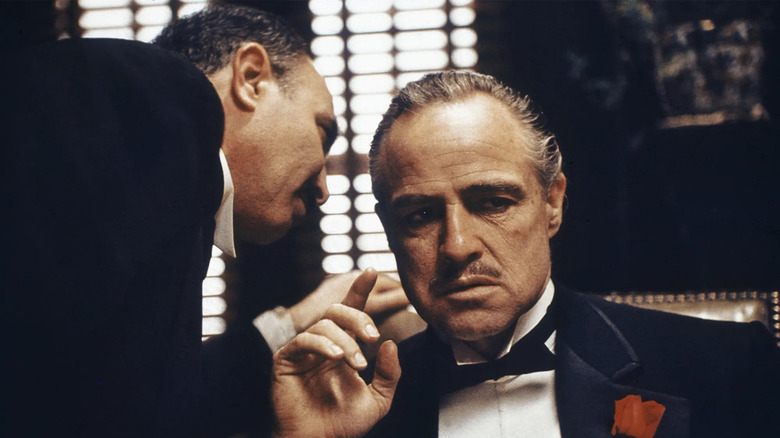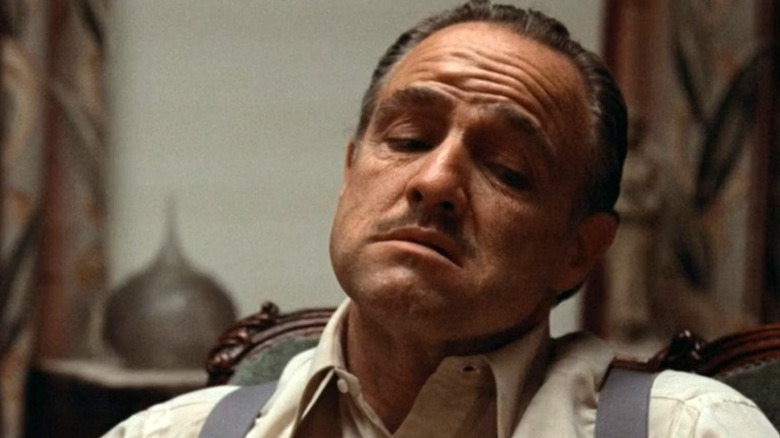Marlon Brando Hindered His Own Hearing For His Godfather Performance
To celebrate "The Godfather" turning 50 in 2022, The Hollywood Reporter sat down with actors James Caan, Robert Duvall, Talia Shire, and John Martino, who reflected on the creation and enduring legacy of director Francis Ford Coppola's cinematic masterpiece. Shire expressed her admiration for Marlon Brando's "breathtaking" transformation into the formidable Don Corleone.
"When he came to the set the first time, he was this handsome male," she recalled, but he utilized various makeup and acting techniques to transform himself into a weathered and wise mafioso, making him almost unrecognizable. The use of dental prosthetics gave Brando protruding jowls that made him resemble a bulldog, somehow lending Don Corleone a more dignified power.
Shire said that Brando also employed another unique performance method called "active listening" during filming. "It's not always when you say your lines that you pay attention; it is the listening to all the others around you. So Brando had a technique where he put wax in his ears, so he had to strain to hear you. And we all tried it — and we missed our cues," she jokingly remembered.
In addition, Brando famously refused to learn his lines, relying on off-camera cue cards instead. He believed that the space between striving to hear the lines of your scene partner and searching for your own response was where actors become more natural, letting go of their performativity and living fully in the moment. These eccentric techniques were all part of Brando's training in "The Method," a traditional approach to acting that emphasizes realism and emotional authenticity through psychological and physical changes.
A method to his eccentricities
Brando was a student of Stella Adler, an actor who honed her theatre pedagogy by studying under the grandfather of Method acting himself, Konstantin Stanislavski. All the ballyhoo on "The Godfather" set with ear wax, dentures, and cue cards has to do with the very old-school, artisanal techniques that Brando learned under Adler's tutelage.
Brando studied acting as a true craft, a physically workable trade that uses real changes in the body and mind to get closer to a character's truth. By transforming his facial structure with makeup and dental tools, changing to a more raspy voice, using cue cards to read his lines, and stuffing wax in his ears, Brando was able to light up the parts of his brain that forced him to behave differently and carefully formulate what to say next.
This type of metamorphosis is discussed in one of the first chapters of Stanislavski's infamous book "An Actor Prepares," which is written as a first-hand account of an actor making profound discoveries in his preparation to portray the namesake of William Shakespeare's play "Othello." While Kostya's revelations are horribly racist — the actor smears chocolate cake on his face and uses exaggerated expressions to embody his "savage" character — the core idea is one of the foundations for Method acting: outward changes and techniques can transform you on the inside, bridging the gap between your true self and your character so that you can enter a "creative state." In a creative state, you become fully immersed in the role, transcending to an almost spiritual understanding of the character and their life.
While all of the methods Brando employed on the set of "The Godfather" were a little unorthodox, there was clearly some sort of magic in them, as he produced one of the greatest film performances of all time.

